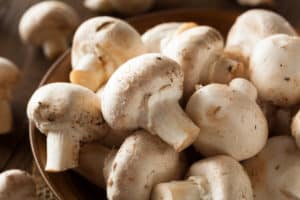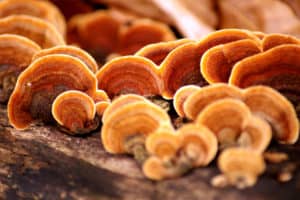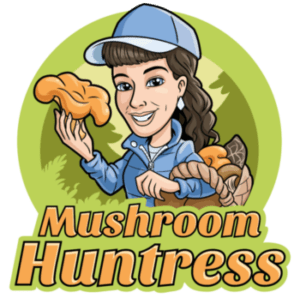How Fungi Eat: Autotrophs and Heterotrophs
Fungi are fascinating in so many ways, including how they take in food and nutrients. The methods fungi use are akin to how humans consume food. They may not have mouths as we do, but the basic process is the same. In this, fungi are closer to animals than plants.
So, what do mushrooms eat exactly?
Autotrophs vs. Heterotrophs: What’s The Difference?
Heterotroph is a Greek word that breaks into two meanings. “Heteros” means different or other, while “trophe” is the word for nutrition. Heterotrophs look outside themselves for food, gathering organic sources from the environment around them. This method includes eating, like humans do, and absorbing, like some species of animals do.
Autotrophs, in contrast, rely on themselves to obtain nutrition. They actually produce their own food. Autotrophs gather carbon dioxide, and in turn carbon, and use it to create organic compounds.
Are Fungi Autotrophs or Heterotrophs?
All fungi are heterotrophs, taking their food from the environment. Fungi join animals in this classification; they are both heterotrophs. Plants, on the other hand, are autotrophs.
Heterotroph fungi include parasites, symbionts, and saprobes.
Saprotrophs and Symbionts: Further Exploration Into Fungi Eating Patterns
Fungi gather nutrients and energy from living and dead organisms. Once they gather the food, they extract the sugar and protein and turn them into energy.
The fungi that gather nutrients from dead organic material are called saprotrophs. Fungi that take their nutrition from living organisms are symbionts. However, it isn’t quite this simple when it comes down to determining which of these categories a fungus belongs in.
Many fungi refuse to be rooted into any one category. Some fungi are both saprotrophs and symbionts, switching their methods over their life cycle or based on environmental demand or needs. These fungi use whichever way is the most conducive to life and health and may live their entire lifespan as just one type or the other if they do not need to switch.
In addition to fungi that switch between eating living or dead matter out of necessity, there are those that do this as a regular part of their function. Necrotrophic fungi infect a living host, and then when it dies, they consume the dead material.
The Saprotrophs
Most fungi fall into the category of saprotroph; they get their food and nutrients by feeding on dead organic material. Fungi digest the organic matter using special enzymes in their system. Many of the mushrooms you encounter in the woods and on the grocery store shelf are saprotrophs to some degree.
The world of decomposer fungi is mixed, especially when it comes to interacting or cohabiting with the human world. Some are beneficial to people, like the ones we grow and forage as a food source. Other saprotrophic fungi cause damage to our built-up environment and negatively impact our economic well-being.
Damaging fungi include dry rot fungus, which causes wood to rot and can seriously affect the stability of a house or building. Aspergillus is a fungi mold decomposer that spoils foods, as is Penicillium. There are even species-specific Penicilliums; one type prefers citrus fruits, another attacks garlic, and still, another goes after apples and pears.

The most well-known fungus, the common button mushroom (Agaricus bisporus), is a saprotroph. This quintessential decomposer consumes dead lawn material, compost, leaf litter, and other organic material in the wild. In commercial cultivation, Agaricus mushrooms are grown on a mixture of manure and straw. Button mushrooms are known as litter decomposers since they grow on the ground and consume what is available to them there.
Two other popular eating mushrooms, Shiitake (Lentinula edodes) and Oysters (Pleurotus sp.), are also fully saprotrophic. Both of these decomposer mushrooms consume dead wood, breaking down the nutrients and turning them into vital nutrition. Oyster and shiitake mushrooms are wood decay decomposers since they only grow on dead trees.
Morel mushrooms appear to be saprotrophs and mutualistic symbionts, though the relationship between the fungus and the trees still isn’t entirely understood.
Grifola frondosa, aka Hen of the Woods, is a saprotroph with weak parasitic tendencies. It causes white butt rot but will happily feed of live, dying, or dead wood. Lion’s Mane (Hericium) is also saprotrophic and parasitic. It infiltrates the wounds of living trees and lives of the dead organic material it gathers there. This may cause the tree wound to fester and further the tree’s decline; eventually, the Lion’s Mane kills the tree.

Like Hen of the Woods and Lion’s Mane, Chicken of the Woods (Laetiporous) is also a switch batter. It is generally a saprotroph but is also a parasite. It causes brown rot in living trees, then continues to live on the trees long after they’re dead. Chicken of the Woods will infect fallen and standing trees impartially. Once we see the fruiting mushroom body, the fungus has already fully attacked the tree, and it is on its way out if it’s not dead already.
The ability to be opportunistic is a strategy with exponential benefits. It ensures that these fungus species can survive in a wide variety of environmental conditions. If things aren’t just how they want, they adapt to the situation.
The Essential Job Of Saprotroph Decomposers
Beyond the saprotrophs that we forage and eat, there are also wonderful decomposers that are essential components of a healthy ecosystem. Fungi decomposers break down leaf matter, dead wood, and other organic matters, and all the excess nutrients get returned to the soil, creating healthy, vibrant earth. This process is a crucial element for all life on earth.
After the fungi decomposers break down the organic matter into viable nutrients, plants utilize them to grow strong and healthy. The nutrients are then passed on to herbivorous animals and humans through the plants. Without the vital efforts of the saprotroph fungi, our planet would be a very different place, and our role here would likely be significantly different, as well.
The key to the saprotroph’s success is the ability to permeate deep into the organic material, even if it’s quite far underground. Fungi use their hyphae (filament-like “roots”) to penetrate far below the soil’s surface. They are also able to breach rigid plant material, including cell walls and wood.
All these skills and abilities make fungi the primary decomposer of the forest. A forest without saprotroph fungi struggles to maintain and renew its resources.
The Symbionts
The fungi that aren’t decomposers usually fall into the symbiotic, or symbiont, category. This includes parasites and mutualists.
Parasites possess unique structures and methods for penetrating their hosts. In this relationship, the parasitic fungus lives off the other organism for its benefit and with no benefit to the host. Parasitic fungi produce enzymes that destroy the host, usually over a significant amount of time. Rarely are the fungi in a rush to eliminate the host. While breaking down the living host, the fungi obtain all the nutrients they need to thrive.
There are seemingly infinite examples of parasitic fungi, from agricultural diseases to animals and human fungal parasites. Athletes’ foot is a fungal disease. One of the most well-known and wildly fantastic examples of parasitic fungi is Cordyceps. The Cordyceps fungus parasitizes living moth larvae, kills it, and then feeds on the mummified remains as its primary source of nutrients.
Mutualistic Fungi, The Beneficial Symbionts
As you can see, there are many ways in which fungi interact with their environment to access nutrients needed to survive. While the parasites take what they want without giving anything back, the mutualistic fungi form mutually beneficial relationships with nearby living organisms. Most mutualistic fungi have relationships with trees, with the fungi gathering nutrients from the tree roots.
These relationships are generally not essential for the trees, but they benefit significantly from the connection. This is because trees are stationary; they cannot move to gather nutrients or hide from diseases or predators. So, instead, they rely on the fungi network of mycelium to warn them of environmental stressors and let them know what is going on in the forest.
Morels, trumpet mushrooms (horn of plenty), chanterelles, and truffles all have mutually beneficial relationships with trees. Each of these fungi forms relationships with specific trees; they won’t connect with just any tree. The exact relationships between trees and fungi are still being studied and aren’t fully understood. We don’t know how they choose certain tree species or why. And, the extent of the relationship is still unknown.
Final Thoughts
The Fungi Kingdom is a vast, intricate, and varied place. With so many types of fungi and so many types of relationships, there is always something interesting to learn. There is likely still much that fungi can teach us about the world and ecosystem. One thing is for sure, though; fungi are fascinating in all their ways!




